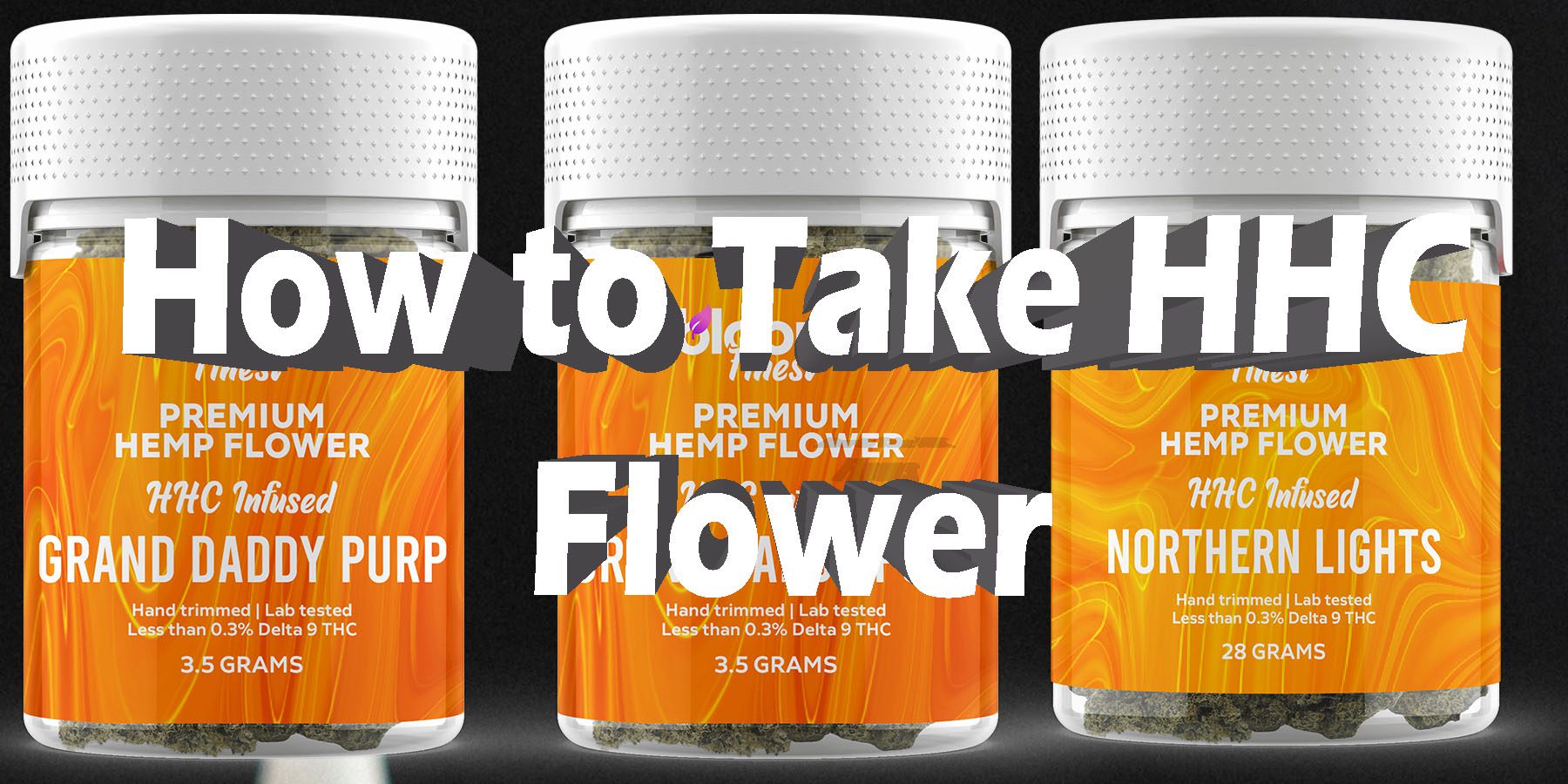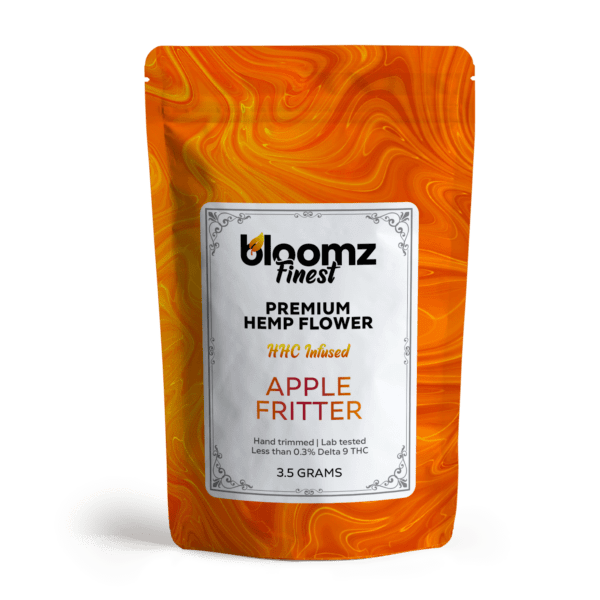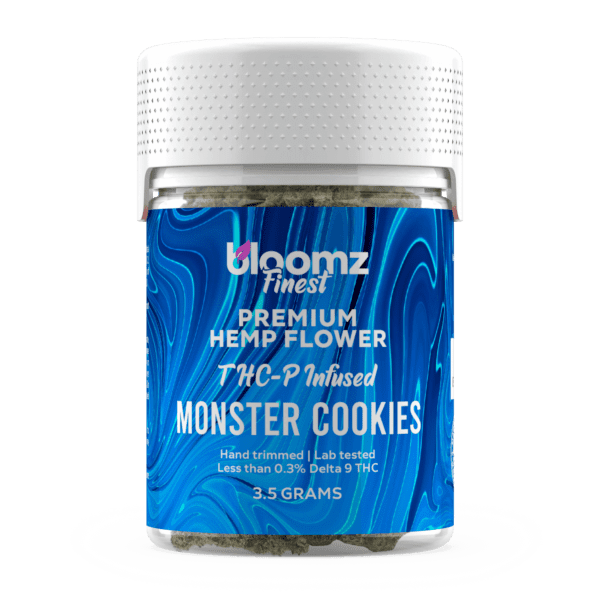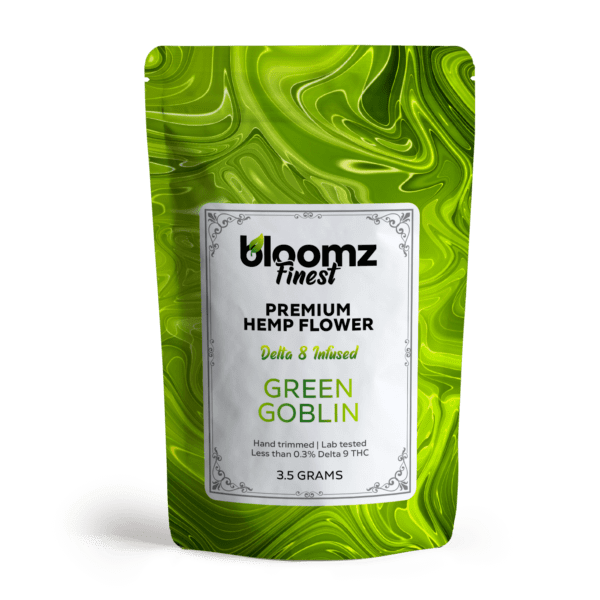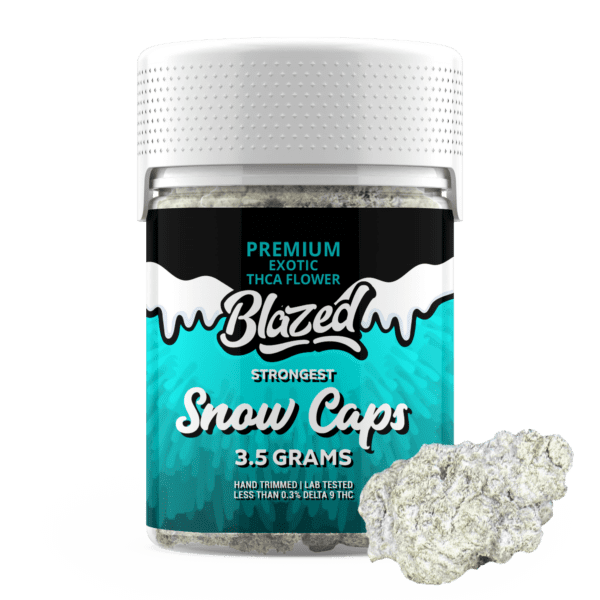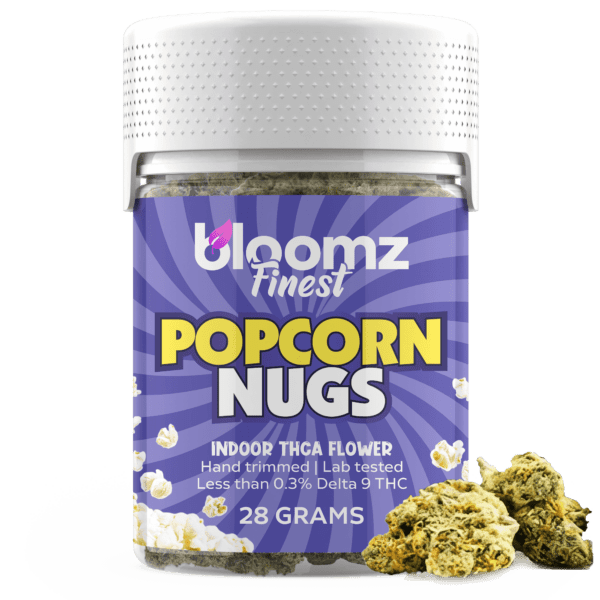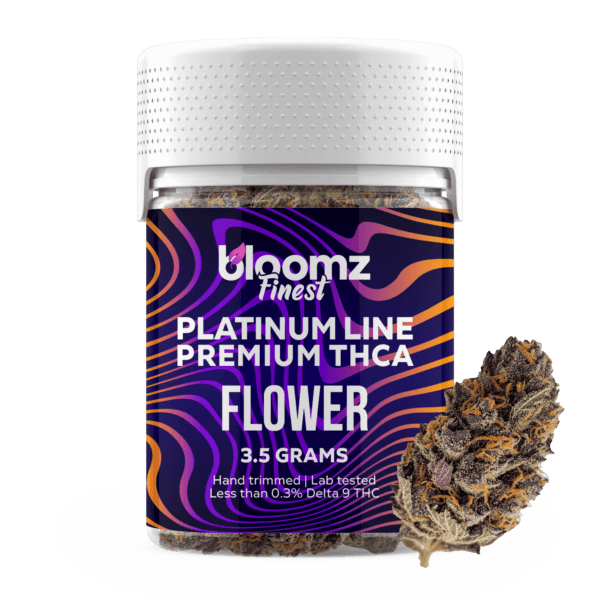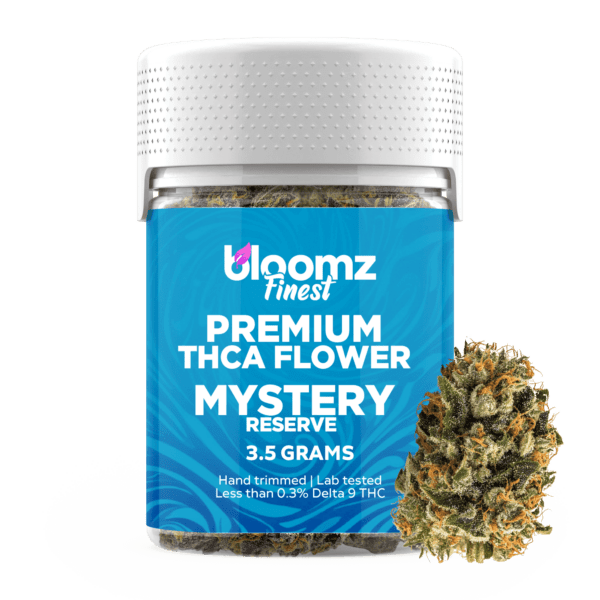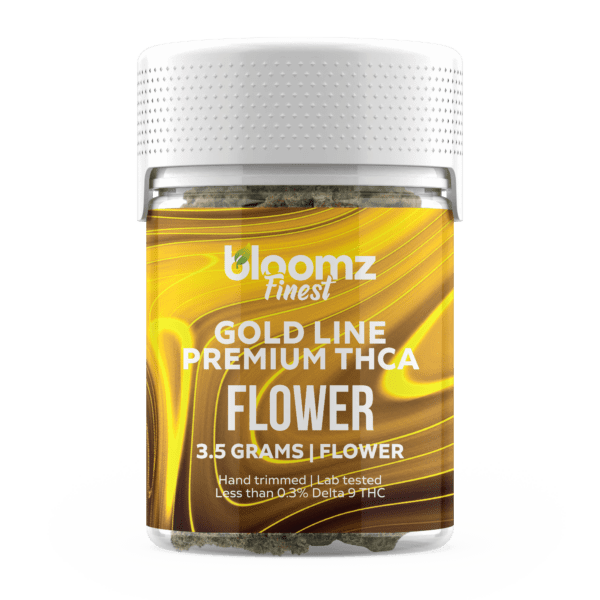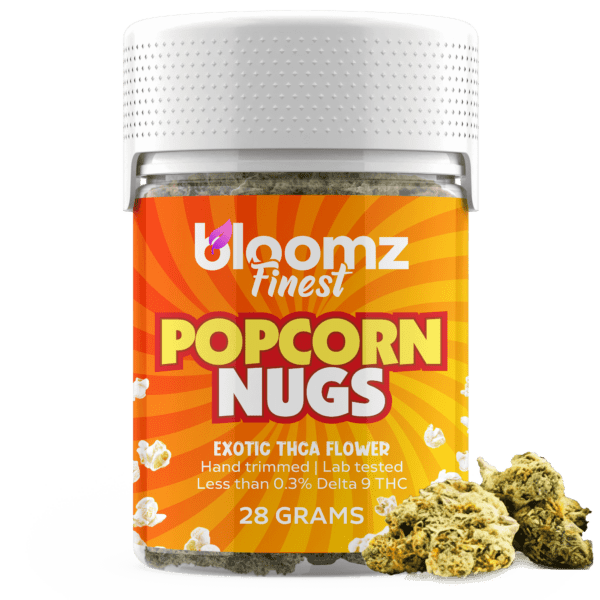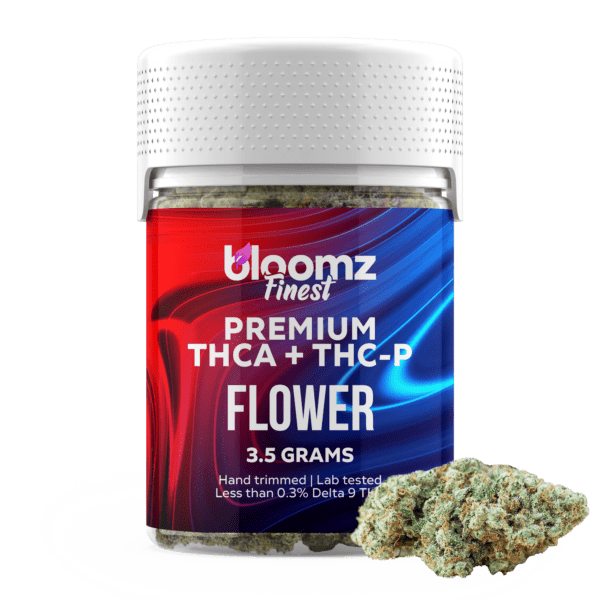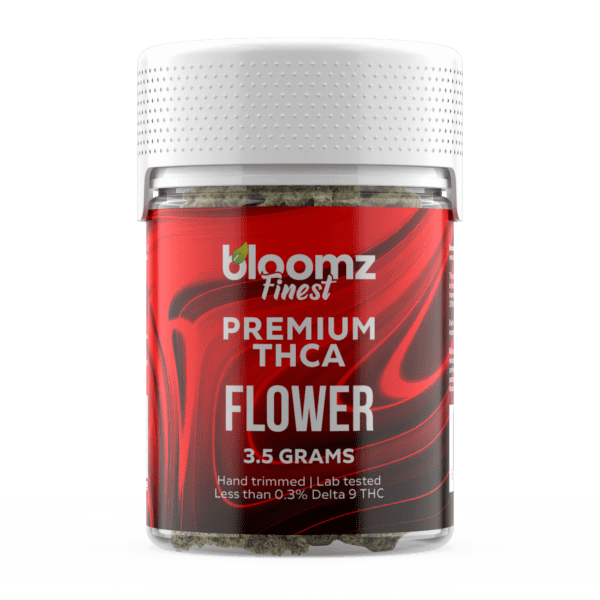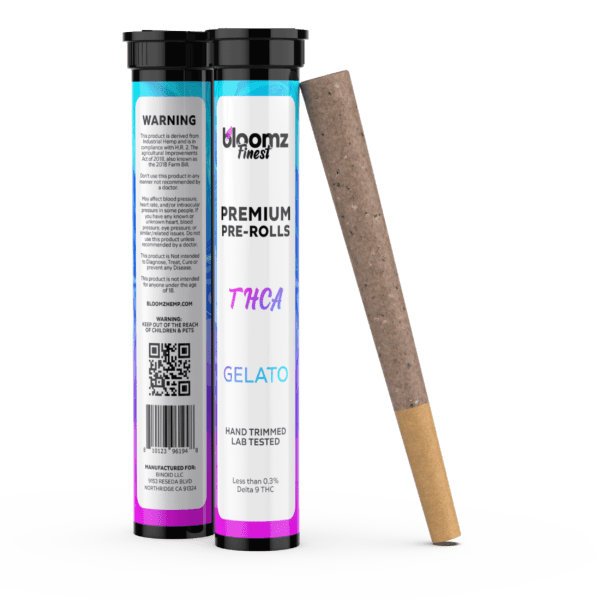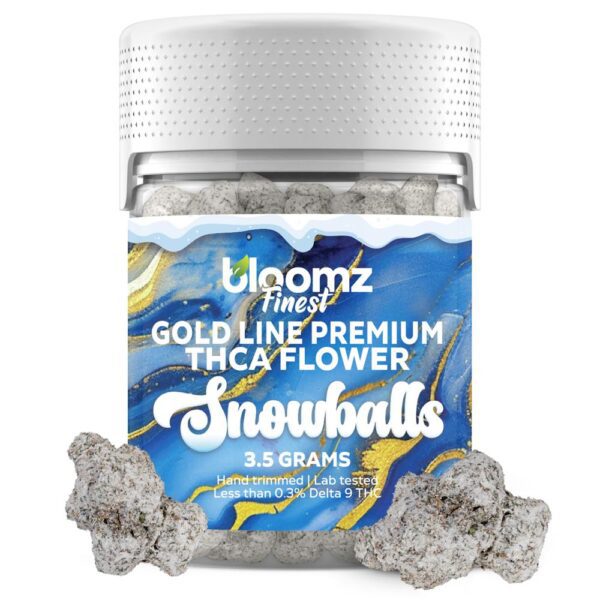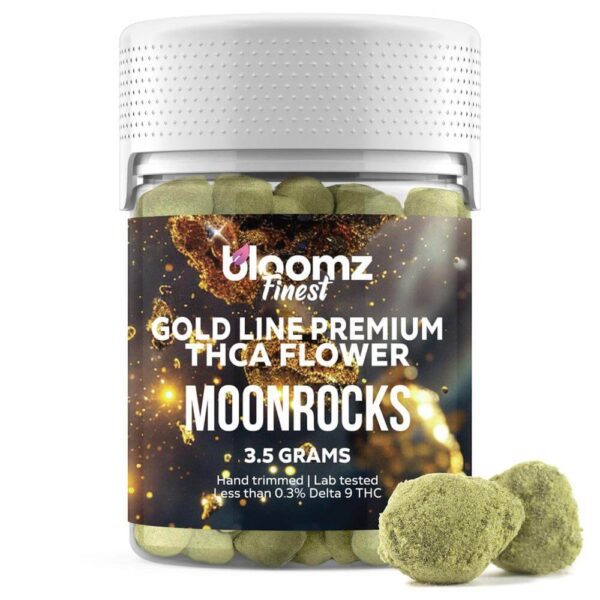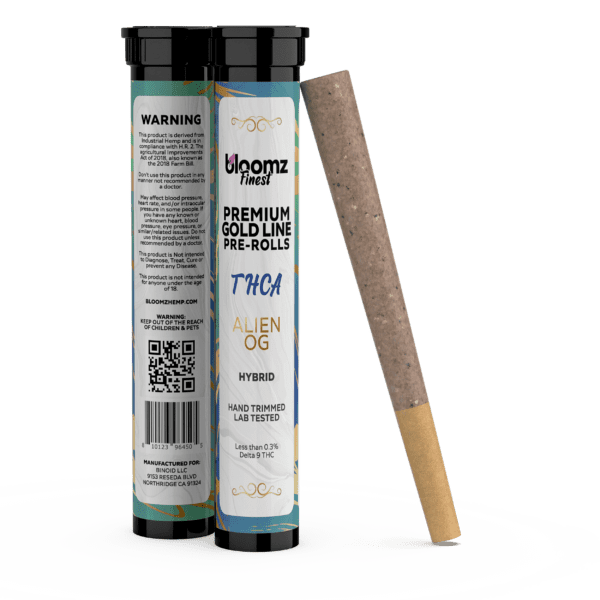Ever felt like you’re navigating a cosmic sea of cannabinoids, with new stars like HHC flower twinkling on the horizon? You’re not alone! This cannabinoid has emerged from the cannabinoid nebula, capturing attention with its unique profile and effects often described as intriguingly familiar yet distinct. It offers a different journey compared to its THC cousins, presenting a potentially balanced experience for the curious explorer. But like any voyage into new territory, charting the course requires knowledge and preparation. This guide is your astrolabe, designed to help you understand, select, and responsibly navigate the experience of HHC flower. Let’s embark on this exploration and learn how to approach this fascinating botanical effectively.
To Buy HHC Flower Click Here
Recommended products
HHC Flower 101
Hexahydrocannabinol is a hydrogenated form of tetrahydrocannabinol, meaning hydrogen atoms have been added to the THC molecule’s structure. While HHC can occur naturally in cannabis in trace amounts, the HHC used in commercial products is typically semi-synthetic, created in a lab by hydrogenating THC or, more commonly, CBD derived from legal hemp. This hydrogenation process is somewhat similar to how vegetable oil is turned into margarine and is believed to potentially increase the cannabinoid’s stability against heat and oxidation compared to THC.
Since HHC isn’t abundant naturally, “HHC flower” isn’t a plant grown to be HHC-dominant. Instead, it follows a similar manufacturing process to Delta 8 or THC-P flower. High-quality hemp flower (usually rich in CBD or CBG and containing less than 0.3% Delta 9 THC) serves as the base. This flower is then infused or coated with HHC distillate – the purified, concentrated form of HHC produced through the hydrogenation and subsequent refinement processes. Methods like spraying or tumbling are used to apply the HHC distillate onto the hemp buds, creating the final smokeable HHC flower product.
An interesting aspect of HHC is the presence of two main isomers, which are molecules with the same atoms but arranged differently: 9R HHC and 9S HHC. Scientific understanding suggests that the 9R isomer is primarily responsible for binding to the body’s cannabinoid receptors (like CB1) and producing psychoactive effects similar to THC, while the 9S isomer is thought to be much less active. The ratio of these two isomers in the HHC distillate can therefore influence the overall potency and effects of the final HHC flower product, making detailed lab testing particularly important.
So, HHC flower essentially combines the familiar look, feel, and aroma of hemp flower with the unique effects imparted by the added HHC distillate. Users often report effects similar in nature to Delta 9 THC but potentially with a slightly different character – perhaps leaning more towards relaxation or euphoria depending on the individual and the specific product’s isomer ratio. It offers a distinct alternative within the growing landscape of hemp-derived cannabinoids, accessible through the familiar format of smokeable buds.
Recommended products
Who is HHC Flower Actually Tailored For?
HHC flower occupies an interesting space within the hemp market, often appealing to individuals seeking effects that land somewhere between the milder Delta 8 THC and the classic Delta 9 THC experience. Its unique characteristics make it suitable for a specific range of consumers who are looking for something particular from their botanical journey. To be a bit more specific:
Experienced Delta 8 Users Seeking More: Individuals familiar and comfortable with Delta 8 THC who are curious about stepping up slightly in intensity without necessarily jumping straight to high-potency Delta 9 or other stronger options often find HHC flower appealing.
Delta 9 Users Seeking Alternatives: Consumers accustomed to Delta 9 THC who are looking for a legally accessible alternative (depending on state laws) or are curious about potentially subtle differences in effects—perhaps seeking similar potency with a slightly clearer headspace as some report—might gravitate towards HHC.
Cannabinoid Enthusiasts Exploring Variety: People who enjoy sampling the diverse range of cannabinoids available and appreciate nuanced differences in effects often add HHC flower to their list, eager to compare its unique profile to others they’ve experienced.
Those Interested in Stability: Due to its hydrogenated structure, HHC is sometimes perceived as being more chemically stable and resistant to degradation from heat and UV light compared to traditional THC, potentially appealing to users concerned with shelf life (though proper storage is still crucial).
Individuals Prioritizing Legal Access (State-Dependent): Similar to Delta 8 and other hemp-derived cannabinoids, HHC’s federal legality under the 2018 Farm Bill (though state laws vary widely and can change) makes it accessible in areas where Delta 9 THC might be restricted.
Recommended products
5 Key Things to Look for in HHC Flower
Selecting high-quality HHC flower requires careful attention to detail, perhaps even more so than with more established cannabinoids. And so, here are some crucial factors to scrutinize:
Lab Testing (Crucial & Comprehensive): Third-party, batch-specific Certificates of Analysis (COAs) are non-negotiable. Ensure the lab report accurately verifies the HHC potency. Some advanced labs might differentiate between active (9R HHC) and less active (9S HHC) isomers, though this is less common; consistent total HHC potency is key. Critically, the COA must confirm Delta 9 THC levels are below 0.3%. Look for comprehensive safety testing covering residual solvents (from the HHC production/application), pesticides (from the base hemp), heavy metals, and microbial contaminants. Given the hydrogenation process often used to create HHC flower, checking specifically for residual catalysts or processing chemicals is also ideal if included in the panel. Avoid vendors who lack transparent, easily accessible, and complete lab reports.
Source and Cultivation of Base Hemp: The quality of the final product heavily depends on the quality of the hemp flower used as the base. Inquire about its origin – ideally, USA-grown hemp cultivated using organic or sustainable methods to minimize contaminants from the start. Understanding where and how the base flower was grown provides insight into the care taken before the HHC distillate is even introduced.
Terpene and Strain Profiles: While HHC provides the core psychoactive effect, the terpenes from the base hemp flower significantly influence the aroma, taste, and subtle nuances of the experience (the entourage effect). Look for vendors providing details about the base flower’s strain (Indica, Sativa, Hybrid) and its characteristic terpene profile (e.g., limonene, myrcene, pinene). This information helps you choose a flower whose underlying aromatic and potential effect profile aligns with your preferences.
Visual Inspection: Carefully examine the appearance of the HHC flower. When purchasing online, prioritize vendors with clear, detailed product photos. The buds should appear well-formed, nicely trimmed, and visually appealing. Observe how the HHC distillate is applied – it should ideally look like an even coating rather than thick, uneven clumps or a overly saturated appearance. If buying in person, inspect for healthy green colors (strain-dependent), good structure, and absence of mold, mildew, or excessive seeds/stems. Reject flower that looks dull, discolored, overly dry, or poorly handled.
Aroma Check: A rich and pleasant aroma is often a sign of well-preserved terpenes and overall quality. Upon opening the packaging, the HHC flower should emit a distinct scent characteristic of its base strain – potentially citrus, pine, earth, fruit, or floral notes. A weak or non-existent smell might indicate old product or terpene degradation. Conversely, be wary of any harsh chemical, musty, or ammonia-like odors, which could signal problems with the HHC application, curing, or potential contamination.
Recommended products
What are the Methods for Taking HHC Flower?
Once you’ve procured your high-quality HHC flower, understanding the different ways to consume it is key to tailoring your experience. HHC flower offers versatility similar to traditional cannabis or other cannabinoid-infused flowers. The method you choose will significantly impact how quickly you feel the effects, their overall intensity, and how long they last. Common methods involve heating the flower to activate and release the HHC and terpenes for inhalation, preparing it for oral ingestion, or using it as a base for further concentration. Selecting the right method depends on your personal preferences, desired experience, available equipment, and comfort level with HHC’s moderate-to-strong potency profile.
Method #1: Smoking
Smoking is a classic and direct method for consuming HHC flower, involving the combustion of the plant material to create inhalable smoke. This can be done using various tools familiar to cannabis users: hand pipes offer simplicity, water pipes (bongs) use water to cool and filter the smoke for potentially smoother intake, and rolling the ground flower into joints (using papers) or blunts (using wraps) provides a traditional, portable option. Smoking allows for rapid absorption of HHC through the lungs directly into the bloodstream.
This swift delivery results in a quick onset of effects, typically felt within minutes, which can be beneficial for those seeking immediate relaxation or euphoria. It also allows for relatively easy dose titration – taking a small puff, waiting a few moments, and assessing the feeling before deciding on more. However, smoking does involve inhaling combustion byproducts, which can be harsh on the throat and lungs. Additionally, the characteristic aroma of smoking is quite noticeable and tends to linger, which is a factor to consider based on your environment and need for discretion.
Method #2: Vaping
Vaping HHC flower uses a dry herb vaporizer device to heat the flower to a specific temperature, releasing the HHC and terpenes as vapor without actually burning the plant material. This is often considered a less harsh alternative to smoking as it avoids inhaling tar and other combustion byproducts. The flavor profile is often perceived as cleaner and more pronounced when vaping, allowing the nuances of the terpenes to come through more clearly.
The onset time for effects when vaping HHC flower is generally within 5 to 15 minutes – slightly slower than smoking but still relatively fast compared to edibles. Dry herb vaporizers are available as portable, battery-powered units for convenience and discretion, or as larger desktop units that often offer more precise temperature control and vapor production. While vaping requires purchasing a vaporizer, many users prefer it for the smoother experience, enhanced flavor, potentially reduced respiratory irritation, and often less potent, quicker-dissipating aroma compared to smoking.
Method #3: Cooking/Baking
Using HHC flower to create edibles involves infusing the cannabinoid into a fat source (like butter or oil) after decarboxylation (activation through heating) and then incorporating that infusion into food or beverages. This method results in a markedly different experience due to the digestive pathway. When HHC is processed by the liver, its effects have a significantly delayed onset, typically taking 45 minutes to 2 hours or more to become noticeable.
However, once the effects commence, they are often perceived as being stronger and considerably longer-lasting than when HHC is inhaled, potentially lasting for several hours (4-8 hours or more is common for edibles). This makes edibles a smoke-free option suitable for those seeking prolonged effects. Accurate dosing is crucial but can be challenging with homemade edibles; starting with a very low dose and waiting ample time to gauge effects is essential to avoid unintentional overconsumption, especially considering HHC’s potency.
Method #4: Extraction for Concentrates
For those with advanced knowledge and equipment, HHC flower can serve as the starting material for creating HHC concentrates. This involves using processes like solvent extraction (e.g., using ethanol) or solventless methods (like rosin pressing with heat and pressure) to strip and concentrate the HHC and terpenes from the plant material. The resulting product – an HHC oil, wax, or rosin – is significantly more potent than the original flower.
Creating and consuming HHC concentrates requires expertise and caution. The high potency necessitates very small doses, typically consumed through dabbing (vaporizing on a specialized heated surface called a nail or banger) or using vape pens designed for concentrates. Safe extraction practices, especially when using solvents, are paramount, requiring proper ventilation and handling procedures. This method is generally reserved for experienced users seeking maximum potency and familiar with concentrate handling and consumption techniques.
Recommended products
-
THCA Smalls
$149.99$256.99 -
THCA Flower – Platinum Line
$49.99$79.99 -
THCA Flower – Mystery Reserve
$41.99$79.99 -
THCA Flower – Indoor Exotics – Gold Line
$37.99$69.99
How to Take HHC Flower Properly and Effectively Based Upon the Selected Method
Understanding the methods is one thing; applying them correctly, especially with a cannabinoid like HHC known for its notable potency, is key to a positive and controlled experience. Proper technique ensures efficiency, helps manage dosage, and allows you to fully appreciate the characteristics of the HHC flower. Here’s how to approach each method effectively:
Smoking: Start by grinding your HHC flower to an even consistency for a smooth burn. When loading a pipe or bong bowl, pack it firmly enough so it doesn’t fall through, but maintain airflow – don’t pack too densely. Try ‘cornering’ the bowl by lighting only a small portion at a time to make it last longer and preserve flavor. If rolling a joint or blunt, aim for consistent density throughout for an even burn, and always use a crutch or filter tip. Take moderate, steady puffs rather than overly large or rapid ones, especially when first assessing the flower’s effects. Pause between puffs to gauge the intensity.
Vaping: Grind your HHC flower to the consistency recommended by your vaporizer manufacturer (often medium-fine). Loosely fill the chamber, generally not packing it down, to allow hot air to flow evenly through the material. Begin vaping at a lower temperature (e.g., 360°F-380°F / 182°C-193°C) to best experience the terpene flavors and gauge initial effects. You can gradually increase the temperature if you desire denser vapor or stronger effects. Use slow, steady breaths, inhaling for 5-10 seconds per draw to allow for efficient vaporization. Depending on your device, stirring the bowl halfway can promote even extraction.
Cooking/Baking: Accurately decarboxylate your HHC flower first by heating it gently in an oven (e.g., ~240°F / 115°C for 30-45 minutes) to activate the HHC. Then, infuse the decarbed flower into your chosen fat (butter, oil) over low, steady heat (avoid boiling) for 2-3 hours, stirring occasionally. Strain the mixture thoroughly using cheesecloth or a fine sieve, avoiding excessive squeezing. Calculate dosage carefully: estimate the total HHC milligrams in your flower (use lab reports), determine the amount in your final infused fat volume, and portion accordingly into servings. Start with a low dose (e.g., 5-10mg HHC or potentially less depending on your tolerance), wait a full 1.5-2 hours to assess effects, and do not consume more until you understand how that initial dose affects you.
Extraction: Prioritize safety above all else, especially if using flammable solvents (ensure excellent ventilation, no ignition sources). Follow tested procedures precisely for your chosen method (solvent washing/purging or rosin pressing parameters like temperature/pressure/time). Handle the resulting potent HHC concentrate with care. When consuming (e.g., dabbing), start with a very small amount (like a grain of rice or smaller) to test potency before considering larger doses. Wait adequate time after the initial test dab to fully evaluate the effects.
Can You Take HHC Flower if You’re Also Using Other Cannabinoid-Infused Products?
Combining HHC flower with other products containing cannabinoids is feasible, but it requires a mindful and cautious approach, particularly given HHC’s significant potency, which often rivals Delta 9 THC. Interactions between HHC and other cannabinoids, delivered via various product types, can significantly alter the overall intensity, duration, and character of the experience. Understanding how different formats (vapes, edibles, tinctures, etc.) and different cannabinoids (CBD, Delta 8, THC-P, etc.) might interact with HHC flower is crucial for navigating combinations safely.
Consider the interplay of onset and duration times when mixing product types. For example, smoking HHC flower while having previously consumed a long-lasting edible (like a gummy or beverage containing Delta 8 or even more HHC) could lead to manageable initial effects followed by a potentially much stronger, delayed wave as the edible metabolizes. Conversely, using a fast-acting disposable vape pen containing a potent cannabinoid like THC-P alongside HHC flower could result in a rapid and potentially overwhelming spike in intensity. Even combining HHC flower with seemingly innocuous products like CBD capsules requires understanding that the CBD might subtly modulate (though likely not eliminate) the psychoactive effects of the HHC. Awareness of these pharmacokinetic differences is key.
The specific cannabinoids being combined with HHC flower are critically important. Mixing HHC with non-intoxicating compounds like CBD, CBG, or CBN might subtly influence the feel, potentially adding relaxing undertones or slightly tempering the psychoactive peak for some users. Combining HHC with milder cannabinoids like Delta 10 or THCV could create a nuanced effect profile. However, mixing HHC flower with moderate cannabinoids it resembles in potency (like Delta 9 THC or good quality THCA flower) will likely lead to additive effects, resulting in a considerably stronger experience than either alone. Extreme caution is necessary when considering mixing HHC with highly potent cannabinoids such as THC-P, HHC-O, HHC-P, THC-H, or THC-JD, as these combinations could easily lead to uncomfortably intense or overwhelming effects and are generally best avoided by most users.
Therefore, if opting to combine HHC flower with other cannabinoid products, prioritize knowledge and moderation:
Understand All Components: Be absolutely certain about the identity and potency (check lab reports) of the cannabinoids in every product you plan to combine. Do not guess.
Start Extremely Low: Use significantly reduced doses of both the HHC flower and the other product compared to what you would consume of each individually.
Consider the Potency Hierarchy: Be especially cautious when mixing HHC with cannabinoids known to be significantly stronger (like THC-P); combinations with moderate cannabinoids (D8, D9) also require significant dose reduction.
Respect Different Timings: Account for the varying onset and duration times of different product formats (inhalation vs. edibles vs. tinctures) to avoid unexpected, delayed intensification.
Wait and Assess: Allow ample time to fully gauge the effects of the combination before considering consuming more. Be additionally patient than usual.
Listen to Your Body: Pay close attention to how the combination feels. If effects become uncomfortable, stop consuming immediately. Prioritize a safe and controlled experience.
A Quick Word on Storing HHC Flower Before and After Use
Preserving the quality of your HHC flower through proper storage is essential for ensuring its potency, flavor, and overall integrity remain intact from the first bud to the last. HHC, like other cannabinoids and the delicate terpenes responsible for aroma and nuanced effects, can degrade when exposed to detrimental environmental conditions such as air (oxygen), light (especially UV), excessive heat, and moisture. Given that HHC flower often represents a considered purchase, taking simple steps to store it correctly before and after use helps protect its unique characteristics and ensures you get the experience you expect each time. Below are the detailed guidelines for storing your HHC flower effectively:
Utilize Airtight Glass Containers: Opt for jars made of glass, as this material is non-porous, meaning it won’t leach chemicals or negatively affect your flower’s taste—an advantage over some plastic containers. Ensure the jar seals completely airtight (specialized stash jars or standard Mason jars with good seals work well) to crucially prevent oxygen exposure, which causes oxidation and degrades cannabinoids (including HHC) and terpenes over time.
Create the Right Storage Climate: Store the sealed jars in a location that remains consistently cool, dark, and dry. Avoid spots with excessive heat, including proximity to electronics or radiators, as heat significantly accelerates cannabinoid and terpene degradation. Equally important is protection from light, particularly direct sunlight and UV rays which rapidly break down cannabinoids; cupboards, drawers, or closets are ideal. A dry environment is essential to inhibit the growth of mold and mildew.
Consider Humidity Regulation for Optimal Freshness: To preserve the flower’s texture and potency, think about using two-way humidity control packs (common brands include Boveda or Integra Boost) inside your storage jars. These are designed specifically to maintain an ideal relative humidity level (typically 58% or 62% RH), effectively preventing the flower from becoming too dry and brittle (leading to terpene loss) or overly damp (which increases the risk of mold).
Evaluate Original Packaging Wisely: If your HHC Flower initially comes in high-quality packaging, such as a resealable, light-blocking mylar bag or a well-sealed jar, it might suffice for adequate short-term storage. However, for preserving the flower’s premium quality over longer periods, transferring it to an appropriate airtight glass jar setup is generally the preferred method.
Steer Clear of Refrigerator and Freezer Storage: It’s best to avoid storing your flower in the refrigerator, as the frequent opening and closing can cause temperature and humidity fluctuations that may introduce unwanted moisture. Freezing is also not recommended because the extremely low temperatures can make the delicate trichomes (where cannabinoids reside) brittle and prone to breaking off, thereby reducing overall quality and potency.
Maintain Good Storage Habits After Each Use: Whenever you take HHC flower out for use, make it a habit to promptly return any unused portion to its airtight container. Ensuring it’s resealed correctly and placed back into its controlled cool, dark, dry environment immediately helps maintain its integrity for future sessions.
Pros & Cons of Taking HHC Flower
Choosing HHC flower presents a distinct set of potential advantages and disadvantages, largely shaped by its unique chemical structure and its place in the potency spectrum relative to other popular cannabinoids. Considering these points can help you decide if HHC flower aligns with your individual preferences, experience level, and expectations.
Pros
These would be the primary advantages when taking it:
Balanced Potency: Often described as offering effects stronger than Delta 8 but potentially slightly less intense or more clear-headed than Delta 9 THC for some users, providing a sought-after middle ground.
Novel Effects Profile: Many users report unique subjective effects compared to traditional THC, sometimes characterized by uplifting or relaxing sensations without as much mental fog.
Legal Accessibility (State-Dependent): As a hemp derivative, HHC flower enjoys federal legality under the 2018 Farm Bill, making it accessible in many jurisdictions where Delta 9 THC is restricted (though state laws vary and are critical to check).
Potential Stability: Its hydrogenated structure may theoretically offer increased resistance to degradation from oxidation and heat compared to THC, potentially leading to a longer shelf life (though good storage remains vital).
Rapid Onset (Inhalation): Smoking or vaping provides quick delivery of effects, typically within minutes.
Familiar Consumption Methods: Can be enjoyed using the same methods as traditional cannabis flower (smoking, vaping, edibles).
Entourage Effect Potential: Benefits from the terpenes present in the base hemp flower, contributing to aroma, flavor, and potentially nuanced effects.
Alternative for D9 Users: Offers an option for experienced users seeking effects similar to Delta 9 THC but looking for a legally distinct alternative or subtly different experience.
Cons
These could be the typical drawbacks encountered:
Variability in Effects Due to Isomer Ratios: The production of HHC creates two main isomers (9R and 9S HHC), with 9R being significantly more active. The ratio of these isomers can vary between products, potentially leading to slight inconsistencies in perceived potency or effects even with similar total HHC content listed.
Potential for Tolerance Development: As with other psychoactive cannabinoids, regular use of HHC flower can lead to tolerance, requiring larger amounts over time to achieve the initial desired effects or necessitating tolerance breaks.
Potential Drug Test Complications: While research is ongoing and less definitive than for THC isomers, there’s a risk that HHC metabolites could be detected by standard drug tests that screen for THC, potentially causing a positive result.
Now You Have a Better Idea on How to Take HHC Flower!
Entering the realm of HHC flower equipped with this deeper understanding transforms hesitant curiosity into confident, informed exploration. You’re now better prepared to navigate its nuances, respecting its unique character while tailoring the experience to your own preferences through mindful practice. HHC offers a distinct pathway within the diverse cannabinoid landscape, inviting careful engagement and appreciation for its subtleties. As you move forward, continue to prioritize responsible use, informed choices, and embrace the personal discovery that comes with exploring this fascinating compound. The journey through the ever-evolving world of hemp derivatives is ongoing, and your conscious participation shapes your unique adventure within it.
To Buy HHC Flower Click Here
Recommended products
-
Blazed Exotic THCA Flower
$36.99$79.99 -
THCA Moonrocks – Gold Line
$57.99$89.99 -
Exotic THCA Pre-Rolls Gold Line – 3-Pack/6 Pack
$36.99$69.99

